monecky
Pequena coisa
132 posts
Latest Posts by monecky



HAWKEYE - Kate Bishop with the Young Avengers, Wong, Star Lord, Ms Marvel and Doop (MCU)
Avengers Doomsday (?) Concept art by Mushk Rizvi

Interstellar Comet 2I/Borisov Probably Came from Double Red Dwarf Kruger 60
A new study by astronomers from the A. Mickiewicz University and the Space Research Centre of the Polish Academy of Sciences suggests that the interstellar comet 2I/Borisov likely came from a binary star system called Kruger 60.
is a visual binary stellar system located in the constellation of Cepheus.
Also known as DO Cephei, HD 239960, Gliese 860, BD+56 2783, HIP 110893, and ADS 15972, it is a tenth closest multiple stellar system, currently only 13.15 light-years from the Sun and approaching.
Kruger 60 is named after the German astronomer Adalbert Kruger who observed it in 1873.
It consists of two M-type stars (red dwarfs) — Kruger 60A and B — that orbit each other once every 44.6 years.
Kruger 60A has about 27% of the Sun’s mass and 35% of the solar radius, Kruger 60B is a smaller star with about 18% of the Sun’s mass and 24% of the solar radius.
They modeled the motion of the comet, the Sun and 647 stellar systems from their list of potential perturbers of cometary motion.
They found that one million years ago, 2I/Borisov passed Kruger 60 at a distance of 5.7 light-years having an extremely small relative velocity of 7,700 mph (3.43 km/s).
“As the orbit of this comet will become more precise the minimal distance between these two bodies might vary but their relative velocity will remain very small, which suggests that 2I/Borisov might originate from Kruger 60,” the researchers said. (source)
Protecting our Home Planet 🌎

Did you ever wonder how we spots asteroids that may be getting too close to Earth for comfort? Wonder no more. Our Planetary Defense Coordination Office does just that. Thanks to a variety of ground and space based telescopes, we’re able to detect potentially hazardous objects so we can prepare for the unlikely threat against our planet.
What is a near-Earth object?

Near-Earth objects (NEOs) are asteroids and comets that orbit the Sun, but their orbits bring them into Earth’s neighborhood – within 30 million miles of Earth’s orbit.
These objects are relatively unchanged remnant debris from the solar system’s formation some 4.6 billion years ago. Most of the rocky asteroids originally formed in the warmer inner solar system between the orbits of Mars and Jupiter, while comets, composed mostly of water ice with embedded dust particles, formed in the cold outer solar system.
Who searches for near-Earth objects?

Our Near-Earth Object (NEO) Observations Program finds, tracks and monitors near-Earth asteroids and comets. Astronomers supported by the program use telescopes to follow up the discoveries to make additional measurements, as do many observatories all over the world. The Center for Near-Earth Object Studies, based at our Jet Propulsion Laboratory, also uses these data to calculate high-precision orbits for all known near-Earth objects and predict future close approaches by them to Earth, as well as the potential for any future impacts.
How do we calculate the orbit of a near-Earth object?

Scientists determine the orbit of an asteroid by comparing measurements of its position as it moves across the sky to the predictions of a computer model of its orbit around the Sun. The more observations that are used and the longer the period over which those observations are made, the more accurate the calculated orbit and the predictions that can be made from it.
How many near-Earth objects have been discovered so far?
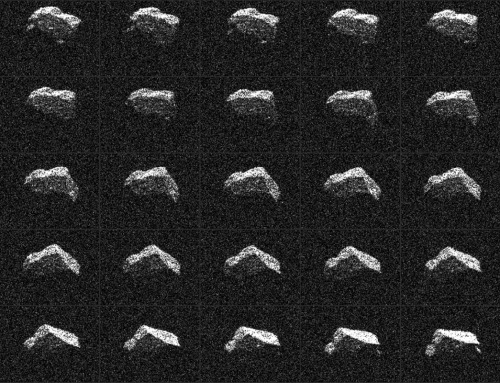
At the start of 2019, the number of discovered NEOs totaled more than 19,000, and it has since surpassed 20,000. An average of 30 new discoveries are added each week. More than 95 percent of these objects were discovered by NASA-funded surveys since 1998, when we initially established its NEO Observations Program and began tracking and cataloguing them.
Currently the risk of an asteroid striking Earth is exceedingly low, but we are constantly monitoring our cosmic neighborhood. Have more questions? Visit our Planetary Defense page to explore how we keep track of near-Earth objects.
Make sure to follow us on Tumblr for your regular dose of space: http://nasa.tumblr.com.




On that day in 1957 was launched the satellite Sputnik 1, the Earth’s first artificial satellite.
The Soviet Union launched it into an elliptical low Earth orbit on 4 October 1957, orbiting for three weeks before its batteries died, then silently for two more months before falling back into the atmosphere. It was a 58 cm (23 in) diameter polished metal sphere, with four external radio antennas to broadcast radio pulses. Its radio signal was easily detectable even by radio amateurs and the 65° inclination and duration of its orbit made its flight path cover virtually the entire inhabited Earth. This surprise success precipitated the American Sputnik crisis and triggered the Space Race, a part of the Cold War. The launch ushered in new political, military, technological, and scientific developments.
read more & video

Unusual hexagonal cloud pattern surrounding Saturn’s north pole. Credit:NASA, JPL-Caltech, SSI, Maksim Kakitsev
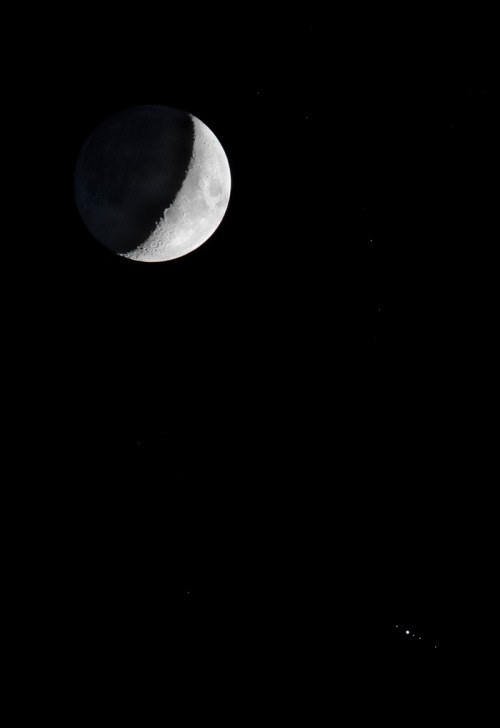
Jupiter and the Moons via NASA https://ift.tt/31QTY9y









Grand Jupiter
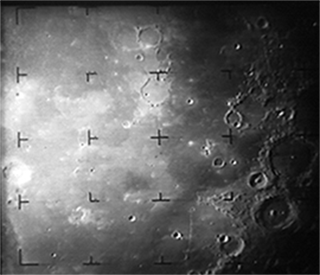
If #NationalCheeseDay has you thinking about the Moon, you’re not alone. 🧀
In 1965, the Ranger 9 probe captured these sharp images of a cratered lunar surface just moments before its planned impact. What we learned paved the way for Apollo. #Apollo50th
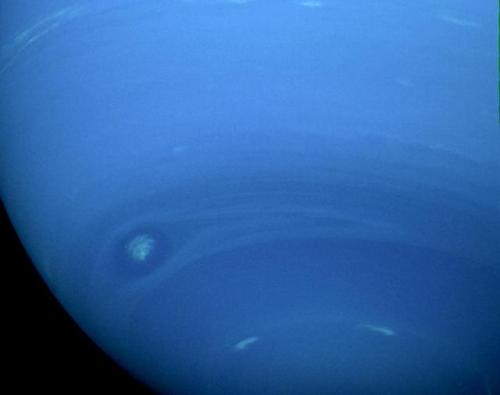
This photograph of Neptune’s southern hemisphere was taken by the narrow-angle camera on NASA’s Voyager 2 when the spacecraft was 4.2 million km (2.6 million miles) from the planet.
Image credit: NASA/JPL





You and Grindelwald were as close as brothers…
Oh we were closer than brothers.
A Tour of Storms Across the Solar System

Earth is a dynamic and stormy planet with everything from brief, rumbling thunderstorms to enormous, raging hurricanes, which are some of the most powerful and destructive storms on our world. But other planets also have storm clouds, lightning — even rain, of sorts. Let’s take a tour of some of the unusual storms in our solar system and beyond.
Tune in May 22 at 3 p.m. for more solar system forecasting with NASA Chief Scientist Jim Green during the latest installment of NASA Science Live: https://www.nasa.gov/nasasciencelive.

1. At Mercury: A Chance of Morning Micrometeoroid Showers and Magnetic ‘Tornadoes’
Mercury, the planet nearest the Sun, is scorching hot, with daytime temperatures of more than 800 degrees Fahrenheit (about 450 degrees Celsius). It also has weak gravity — only about 38% of Earth’s — making it hard for Mercury to hold on to an atmosphere.
Its barely there atmosphere means Mercury doesn’t have dramatic storms, but it does have a strange “weather” pattern of sorts: it’s blasted with micrometeoroids, or tiny dust particles, usually in the morning. It also has magnetic “tornadoes” — twisted bundles of magnetic fields that connect the planet’s magnetic field to space.

2. At Venus: Earth’s ‘Almost’ Twin is a Hot Mess
Venus is often called Earth’s twin because the two planets are similar in size and structure. But Venus is the hottest planet in our solar system, roasting at more than 800 degrees Fahrenheit (430 degrees Celsius) under a suffocating blanket of sulfuric acid clouds and a crushing atmosphere. Add to that the fact that Venus has lightning, maybe even more than Earth.
In visible light, Venus appears bright yellowish-white because of its clouds. Earlier this year, Japanese researchers found a giant streak-like structure in the clouds based on observations by the Akatsuki spacecraft orbiting Venus.

3. At Earth: Multiple Storm Hazards Likely
Earth has lots of storms, including thunderstorms, blizzards and tornadoes. Tornadoes can pack winds over 300 miles per hour (480 kilometers per hour) and can cause intense localized damage.
But no storms match hurricanes in size and scale of devastation. Hurricanes, also called typhoons or cyclones, can last for days and have strong winds extending outward for 675 miles (1,100 kilometers). They can annihilate coastal areas and cause damage far inland.

4. At Mars: Hazy with a Chance of Dust Storms
Mars is infamous for intense dust storms, including some that grow to encircle the planet. In 2018, a global dust storm blanketed NASA’s record-setting Opportunity rover, ending the mission after 15 years on the surface.
Mars has a thin atmosphere of mostly carbon dioxide. To the human eye, the sky would appear hazy and reddish or butterscotch colored because of all the dust suspended in the air.

5. At Jupiter: A Shrinking Icon
It’s one of the best-known storms in the solar system: Jupiter’s Great Red Spot. It’s raged for at least 300 years and was once big enough to swallow Earth with room to spare. But it’s been shrinking for a century and a half. Nobody knows for sure, but it’s possible the Great Red Spot could eventually disappear.

6. At Saturn: A Storm Chasers Paradise
Saturn has one of the most extraordinary atmospheric features in the solar system: a hexagon-shaped cloud pattern at its north pole. The hexagon is a six-sided jet stream with 200-mile-per-hour winds (about 322 kilometers per hour). Each side is a bit wider than Earth and multiple Earths could fit inside. In the middle of the hexagon is what looks like a cosmic belly button, but it’s actually a huge vortex that looks like a hurricane.
Storm chasers would have a field day on Saturn. Part of the southern hemisphere was dubbed “Storm Alley” by scientists on NASA’s Cassini mission because of the frequent storm activity the spacecraft observed there.

7. At Titan: Methane Rain and Dust Storms
Earth isn’t the only world in our solar system with bodies of liquid on its surface. Saturn’s moon Titan has rivers, lakes and large seas. It’s the only other world with a cycle of liquids like Earth’s water cycle, with rain falling from clouds, flowing across the surface, filling lakes and seas and evaporating back into the sky. But on Titan, the rain, rivers and seas are made of methane instead of water.
Data from the Cassini spacecraft also revealed what appear to be giant dust storms in Titan’s equatorial regions, making Titan the third solar system body, in addition to Earth and Mars, where dust storms have been observed.

8. At Uranus: A Polar Storm
Scientists were trying to solve a puzzle about clouds on the ice giant planet: What were they made of? When Voyager 2 flew by in 1986, it spotted few clouds. (This was due in part to the thick haze that envelops the planet, as well as Voyager’s cameras not being designed to peer through the haze in infrared light.) But in 2018, NASA’s Hubble Space Telescope snapped an image showing a vast, bright, stormy cloud cap across the north pole of Uranus.

9. At Neptune: Methane Clouds
Neptune is our solar system’s windiest world. Winds whip clouds of frozen methane across the ice giant planet at speeds of more than 1,200 miles per hour (2,000 kilometers per hour) — about nine times faster than winds on Earth.
Neptune also has huge storm systems. In 1989, NASA’s Voyager 2 spotted two giant storms on Neptune as the spacecraft zipped by the planet. Scientists named the storms “The Great Dark Spot” and “Dark Spot 2.”

10. It’s Not Just Us: Extreme Weather in Another Solar System
Scientists using NASA’s Hubble Space Telescope made a global map of the glow from a turbulent planet outside our solar system. The observations show the exoplanet, called WASP-43b, is a world of extremes. It has winds that howl at the speed of sound, from a 3,000-degree-Fahrenheit (1,600-degree-Celsius) day side, to a pitch-black night side where temperatures plunge below 1,000 degrees Fahrenheit (500 degrees Celsius).
Discovered in 2011, WASP-43b is located 260 light-years away. The planet is too distant to be photographed, but astronomers detected it by observing dips in the light of its parent star as the planet passes in front of it.
Make sure to follow us on Tumblr for your regular dose of space: http://nasa.tumblr.com.
** Marco had a good season ** **
** Mario had a good season ** **
Fans: Now you will give Götze a chance?
Löw:









You and Grindelwald were as close as brothers…
Oh we were closer than brothers.
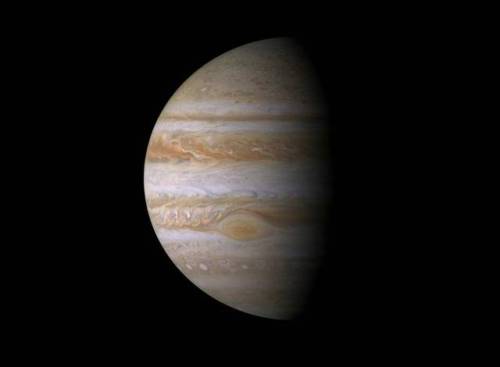
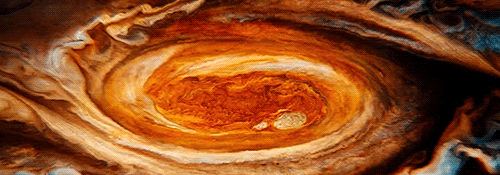
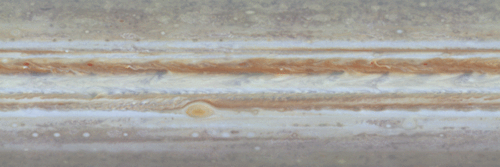
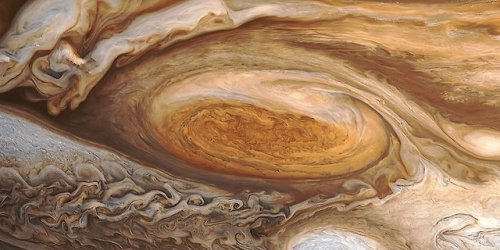
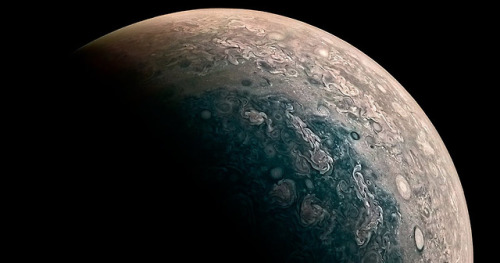
Jupiter is perpetually covered with clouds composed of ammonia crystals and possibly ammonium hydrosulfide. The clouds are located in the tropopause and are arranged into bands of different latitudes, known as tropical regions. These are sub-divided into lighter-hued zones and darker belts. The interactions of these conflicting circulation patterns cause storms and turbulence. Wind speeds of 100 m/s (360 km/h) are common in zonal jets. The zones have been observed to vary in width, color and intensity from year to year, but they have remained sufficiently stable for scientists to give them identifying designations.
The cloud layer is only about 50 km (31 mi) deep, and consists of at least two decks of clouds: a thick lower deck and a thin clearer region. There may also be a thin layer of water clouds underlying the ammonia layer. Supporting the idea of water clouds are the flashes of lightning detected in the atmosphere of Jupiter. These electrical discharges can be up to a thousand times as powerful as lightning on Earth. The water clouds are assumed to generate thunderstorms in the same way as terrestrial thunderstorms, driven by the heat rising from the interior.
source
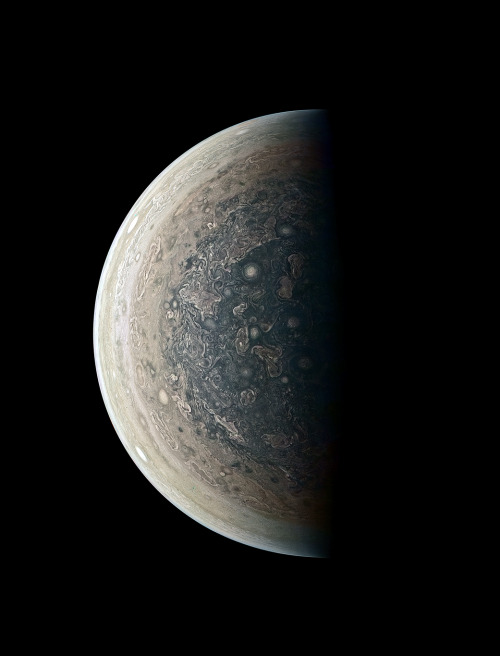
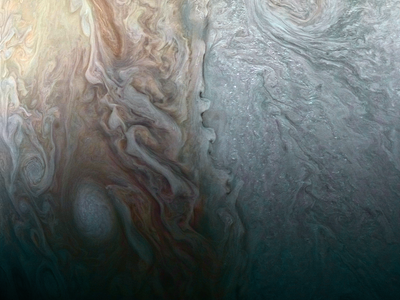



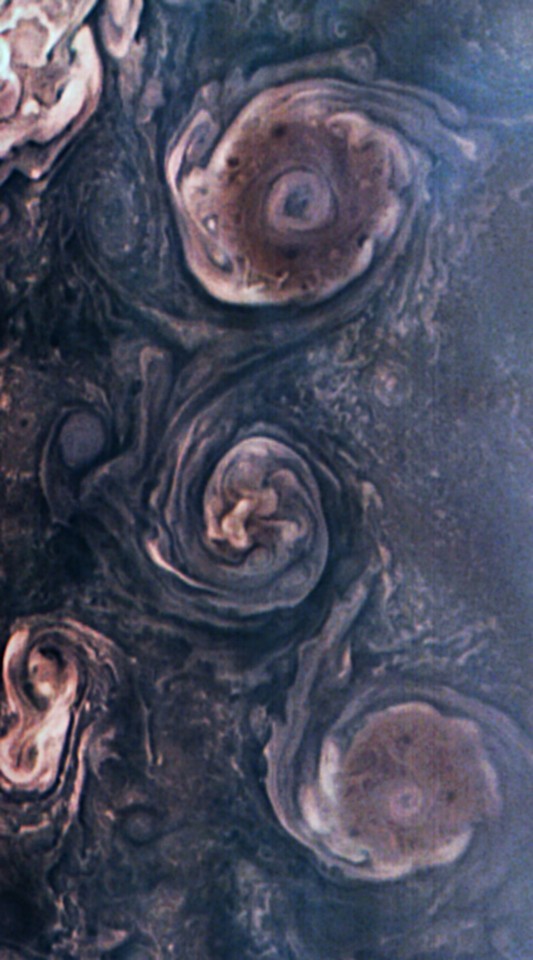



Images of Jupiter taken by JunoCam on NASA’s Juno spacecraft.
Credit: NASA, JPL-Caltech, Mission Juno, Jason Major, Luca Fornaciari, Gerald Eichstädt
Ten interesting facts about Uranus
Like the classical planets, Uranus is visible to the naked eye, but it was never recognised as a planet by ancient observers because of its dimness and slow orbit. Sir William Herschel announced its discovery on 13 March 1781, expanding the known boundaries of the Solar System for the first time in history and making Uranus the first planet discovered with a telescope.

Uranus is the seventh planet from the Sun. It has the third-largest planetary radius and fourth-largest planetary mass in the Solar System. Uranus is similar in composition to Neptune, and both have different bulk chemical composition from that of the larger gas giants Jupiter and Saturn.

(The five largest moons of Uranus) Like all of the giant planets, Uranus has its share of moons. At present, astronomers have confirmed the existence of 27 natural satellites. But for the most part, these moons are small and irregular.

Uranus’ moons are named after characters created by William Shakespeare and Alexander Pope. These include Oberon, Titania and Miranda. All are frozen worlds with dark surfaces. Some are ice and rock mixtures. The most interesting Uranian moon is Miranda; it has ice canyons, terraces, and other strange-looking surface areas.

Only one spacecraft in the history of spaceflight has ever made a close approach to Uranus. NASA’s Voyager 2 conducted its closest approach to Uranus on January 24th, 1986, passing within 81,000 km of the cloud tops of Uranus. It took thousands of photographs of the gas/ice giant and its moons before speeding off towards its next target: Neptune.

Uranus has rings: All the gas and ice giants have their own ring systems, and Uranus’ is the second most dramatic set of rings in the Solar System.

Uranus makes one trip around the Sun every 84 Earth years. During some parts of its orbit one or the other of its poles point directly at the Sun and get about 42 years of direct sunlight. The rest of the time they are in darkness.
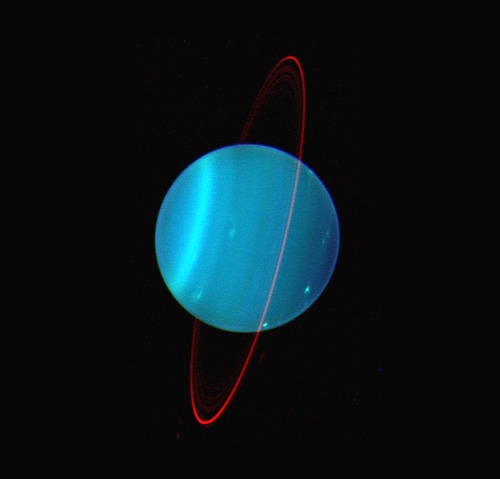
All of the planets in the Solar System rotate on their axis, with a tilt that’s similar to the Sun. In many cases, planet’s have an axial tilt, where one of their poles will be inclined slightly towards the Sun. But the axial tilt of Uranus is a staggering 98 degrees! In other words, the planet is rotating on its side.

Uranus is approximately 4 times the sizes of Earth and 63 times its volume.

Uranus is blue-green in color, the result of methane in its mostly hydrogen-helium atmosphere. The planet is often dubbed an ice giant, since 80 percent or more of its mass is made up of a fluid mix of water, methane, and ammonia ices.

Uranus hits the coldest temperatures of any planet. With minimum atmospheric temperature of -224°C Uranus is nearly coldest planet in the solar system. While Neptune doesn’t get as cold as Uranus it is on average colder. The upper atmosphere of Uranus is covered by a methane haze which hides the storms that take place in the cloud decks.
source
source
source
Images credit: NASA/ wikipedia









Images of Jupiter taken by JunoCam on NASA’s Juno spacecraft.
Credit: NASA, JPL-Caltech, Mission Juno, Jason Major, Luca Fornaciari, Gerald Eichstädt
Ten interesting facts about Jupiter
Here is a list of some interesting facts about the planet Jupiter. A planet that catches the attention of all, by its size, storms and its surprising moons.

The mass of Jupiter is 318 times as massive as the Earth. In fact, Jupiter is 2.5 times more massive than all of the other planets in the Solar System combined.

Its gravity is so strong that a rocket would have to go an unthinkable 135,000 mph to leave.

The Great Red Spot on Jupiter is one of its most familiar features. This persistent anticyclonic storm, which is located south of its equator, measures between 24,000 km in diameter and 12–14,000 km in height. As such, it is large enough to contain two or three planets the size of Earth’s diameter. And the spot has been around for at least 350 years, since it was spotted as far back as the 17th century.

Jupiter’s rings were discovered in 1979 by the passing Voyager 1 spacecraft, but their origin was a mystery. Data from the Galileo spacecraft that orbited Jupiter from 1995 to 2003 later confirmed that these rings were created by meteoroid impacts on small nearby moons.

Extending up to seven million kilometers in the Sun’s direction and almost to the orbit of Saturn in the opposite direction, Jupiter’s magnetosphere is the largest and most powerful of any planetary magnetosphere in the Solar System, and by volume the largest known continuous structure in the Solar System after the heliosphere.

Jupiter has a total of 69 natural satellites. The four largest are: Io, Europa, Ganymede and Callisto. However, it is estimated that the planet has over 200 natural satellites orbiting it. Almost all of them are less than 10 kilometers in diameter, and were only discovered after 1975, when the first spacecraft (Pioneer 10) arrived at Jupiter.

Jupiter Has Been Visited 8 Times By Spacecraft. Jupiter was first visited by NASA’s Pioneer 10 spacecraft in December 1973, and then Pioneer 11 in December 1974. Then came the Voyager 1 and 2 flybys, both of which happened in 1979. This was followed by a long break until Ulysses arrived in February 1992, followed by the Galileo space probe in 1995. Then Cassini made a flyby in 2000, on its way to Saturn. And finally, NASA’s New Horizons spacecraft made its flyby in 2007. NASA’s Juno spacecraft is currently orbiting Jupiter.

Jupiter is the third brightest object in the Solar System, after Venus and the Moon.

Jupiter Is The Fastest Spinning Planet In The Solar System. For all its size and mass, Jupiter sure moves quickly. In fact, with an rotational velocity of 12.6 km/s (~7.45 m/s) or 45,300 km/h (28,148 mph), the planet only takes about 10 hours to complete a full rotation on its axis. And because it’s spinning so rapidly, the planet has flattened out at the poles a little and is bulging at its equator.

Jupiter Cannot Become A Star. Astronomers call Jupiter a failed star, but that’s not really an appropriate description. While it is true that, like a star, Jupiter is rich in hydrogen and helium, Jupiter does not have nearly enough mass to trigger a fusion reaction in its core. This is how stars generate energy, by fusing hydrogen atoms together under extreme heat and pressure to create helium, releasing light and heat in the process.
This is made possible by their enormous gravity. For Jupiter to ignite a nuclear fusion process and become a star, it would need more than 70 times its current mass. If you could crash dozens of Jupiters together, you might have a chance to make a new star. But in the meantime, Jupiter shall remain a large gas giant with no hopes of becoming a star. Sorry, Jupiter!
Sources: universetoday and wikipedia
Images credits: Wikimedia Commons, JAXA, NASA, ESA, Hubble, Wang Letian & Michael Carroll

What do planets look like in the daylight?
via reddit
Reus and Götze when they discovered that Marco had made his first assistance to Mario


Bvb via twitter

The image shows an intensely bright “ring of fire”, as Prof Falcke describes it, surrounding a perfectly circular dark hole. The bright halo is caused by superheated gas falling into the hole. The light is brighter than all the billions of other stars in the galaxy combined - which is why it can be seen at such distance from Earth.
this is one of those things that hurts my brain to even attempt to wrap my head around
“What we see is larger than the size of our entire Solar System,"
How do you even mentally process that kind of scope? it’s ridiculously and awesome

This is the of a . It’s so similar to our . Just released by the and European Research Council. The image of a gigantic black hole at the centre of the M87 — 53m light years away and 6bn times bigger than the — was compiled using data pulled from a network of eight radio telescopes, from the South Pole to Hawaii. As it is impossible to see inside a black hole because no light or electromagnetic radiation can escape its overwhelming , the international team has imaged the black hole’s outer edge, or “event horizon”. It shows a bright ring of — a ring of fire created by light particles that would normally travel in a straight line — bent into a circular path by extreme gravity before they fall into the hole. Inside the ring we see the shadow of the hole itself. Our own also has a huge black hole at its heart. The history of science will be divided by the time before the image and the time after the image. Source:ft.com
Humanity’s first ever picture of a black hole.

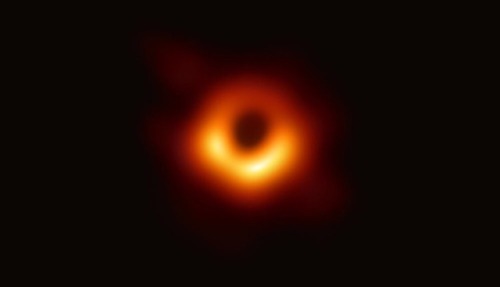
çekilmiş ilk karadelik fotoğrafı hadi biraz kültürlenin
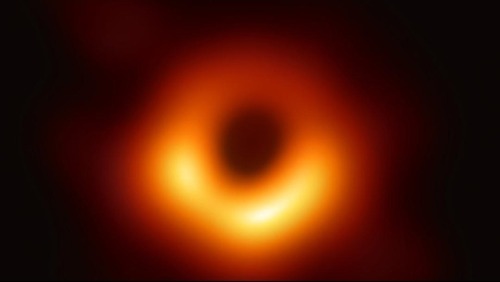
#eye of sauron #OR #fluffy donut #????


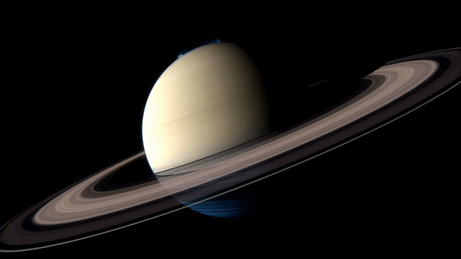
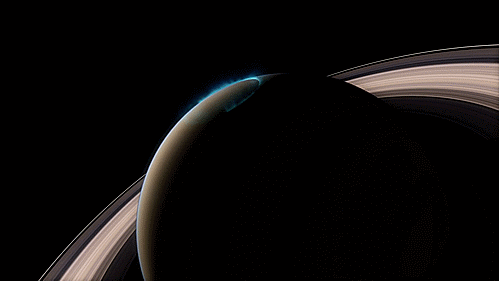
This animation shows the fluttering aurorae that light up both of Saturn’s poles. Created by the interaction of the solar wind with the planet’s magnetic field, Saturn’s aurorae are analogous to the more familiar northern and southern light on Earth.
Credit: ESA/Hubble (M. Kornmesser & L. Calçada)